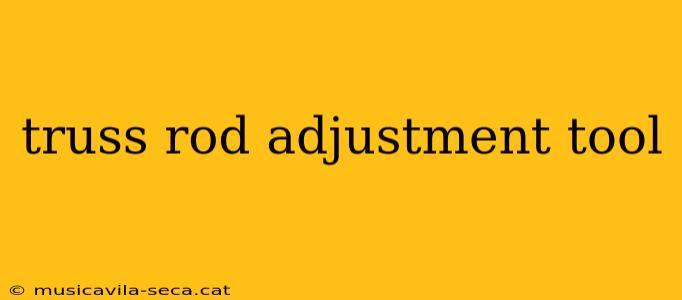When it comes to maintaining your guitar, understanding how to properly adjust the truss rod is essential for optimal performance and playability. A truss rod adjustment tool is an indispensable accessory for any guitarist looking to fine-tune their instrument. This article will explore what a truss rod adjustment tool is, how to use it, and additional tips to ensure you get the best results.
What is a Truss Rod?
A truss rod is a metal rod that runs along the neck of a guitar, designed to counteract the tension of the strings. It plays a critical role in maintaining the neck’s curvature and overall alignment, which affects string height (action) and intonation. The ability to adjust the truss rod allows guitarists to customize their instrument's playability.
How Does a Truss Rod Adjustment Tool Work?
A truss rod adjustment tool typically takes the form of a hex key or wrench that fits into a nut at the headstock or base of the neck. By turning the tool clockwise or counterclockwise, you can either tighten or loosen the truss rod. This adjustment alters the neck's curvature:
- Clockwise: Tightening the truss rod pulls the neck back, reducing the amount of relief (the slight arch in the neck).
- Counterclockwise: Loosening the truss rod allows the neck to bow forward, increasing relief.
Frequently Asked Questions about Truss Rod Adjustment Tools
1. How do I know if my truss rod needs adjustment?
According to authors from WikiHow, signs that your truss rod may need adjustment include:
- String buzzing along the frets.
- High action making it difficult to play.
- Uneven frets causing some strings to be closer to the fretboard than others.
2. What tools do I need to adjust my truss rod?
Typically, you will need a specific truss rod adjustment tool. As stated in WikiHow, it’s crucial to find the correct size of the hex key or wrench for your guitar's truss rod. Other optional tools include a capo, a tuner, and a ruler for measuring string height.
3. How much should I adjust the truss rod?
It’s recommended to make small adjustments, around 1/8 of a turn at a time. This gradual approach helps you assess the effect on the neck and prevents over-adjusting, which could lead to neck damage.
Additional Tips for Truss Rod Adjustment
While the information above provides a solid foundation, here are some practical tips and deeper insights to enhance your truss rod adjustment experience:
1. Know Your Guitar Type
Different guitars may have different truss rod designs (e.g., dual-action vs. single-action). Familiarize yourself with the specific mechanics of your guitar, as this can affect how adjustments should be made.
2. Climate Considerations
Wood expands and contracts with changes in humidity and temperature. After seasonal shifts, it's advisable to check your truss rod adjustment, as the neck may need realignment due to these environmental changes.
3. Record Your Adjustments
Keep a log of any adjustments you make, including dates and specific measurements. This practice can help track how your guitar responds to changes over time and make future adjustments more intuitive.
4. Consider Professional Help
If you're unsure about adjusting the truss rod yourself, consider taking your guitar to a professional luthier or technician. They have the tools and expertise to diagnose issues and make the necessary adjustments with precision.
Conclusion
Using a truss rod adjustment tool can significantly improve the playability of your guitar when done correctly. Remember to approach adjustments with patience and caution. By understanding your guitar's needs and maintaining a regular check on your truss rod, you’ll ensure a smoother playing experience and keep your instrument in top shape.
For more detailed guidance, refer to the original work on WikiHow, where you can find a wealth of information tailored for all skill levels.
By utilizing this guide, you will not only understand how to effectively use a truss rod adjustment tool but also appreciate its role in guitar maintenance. Happy playing!
